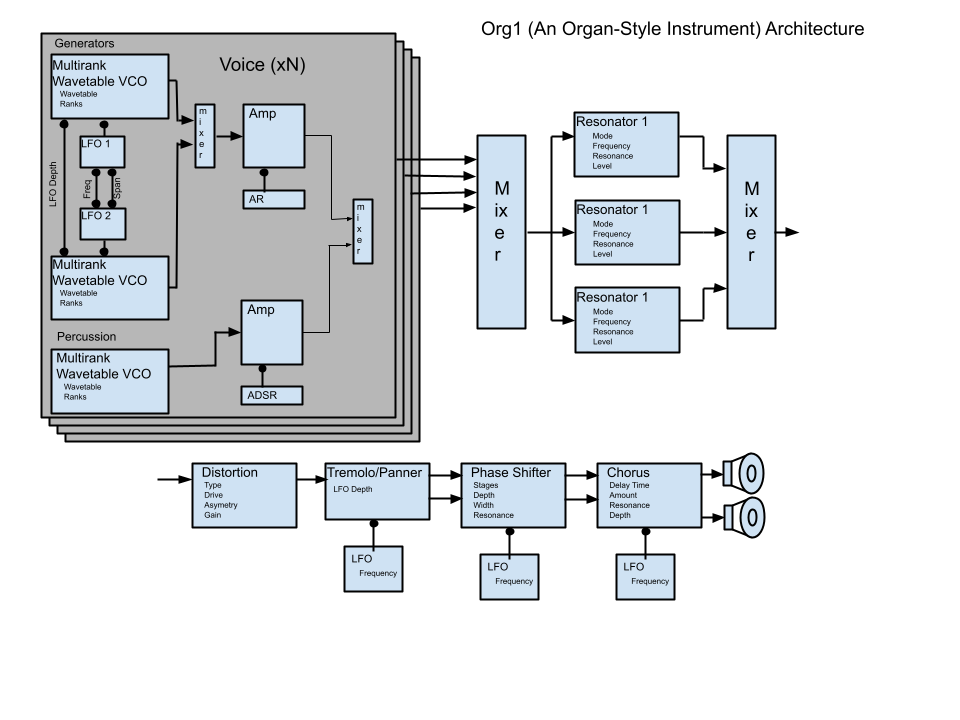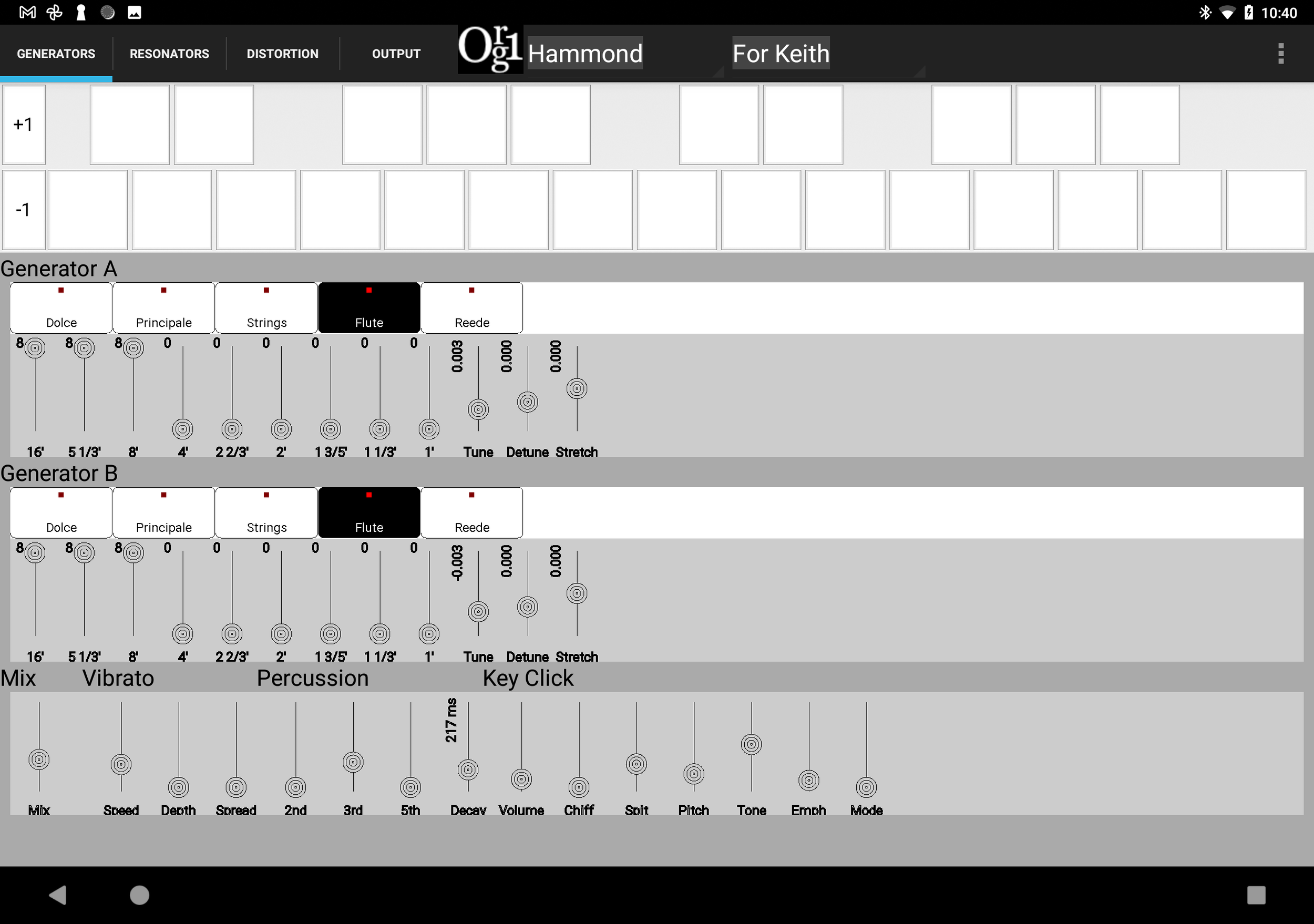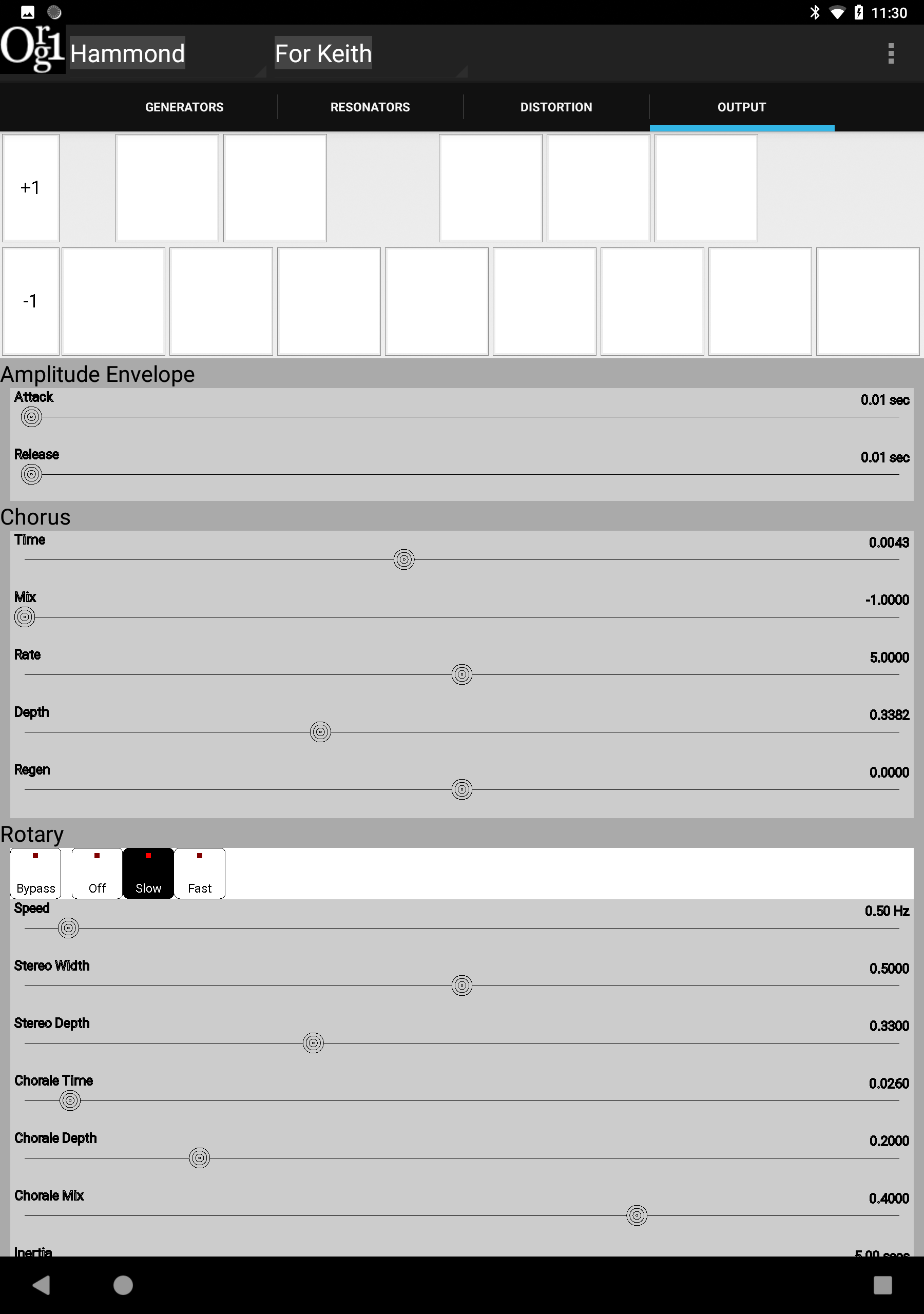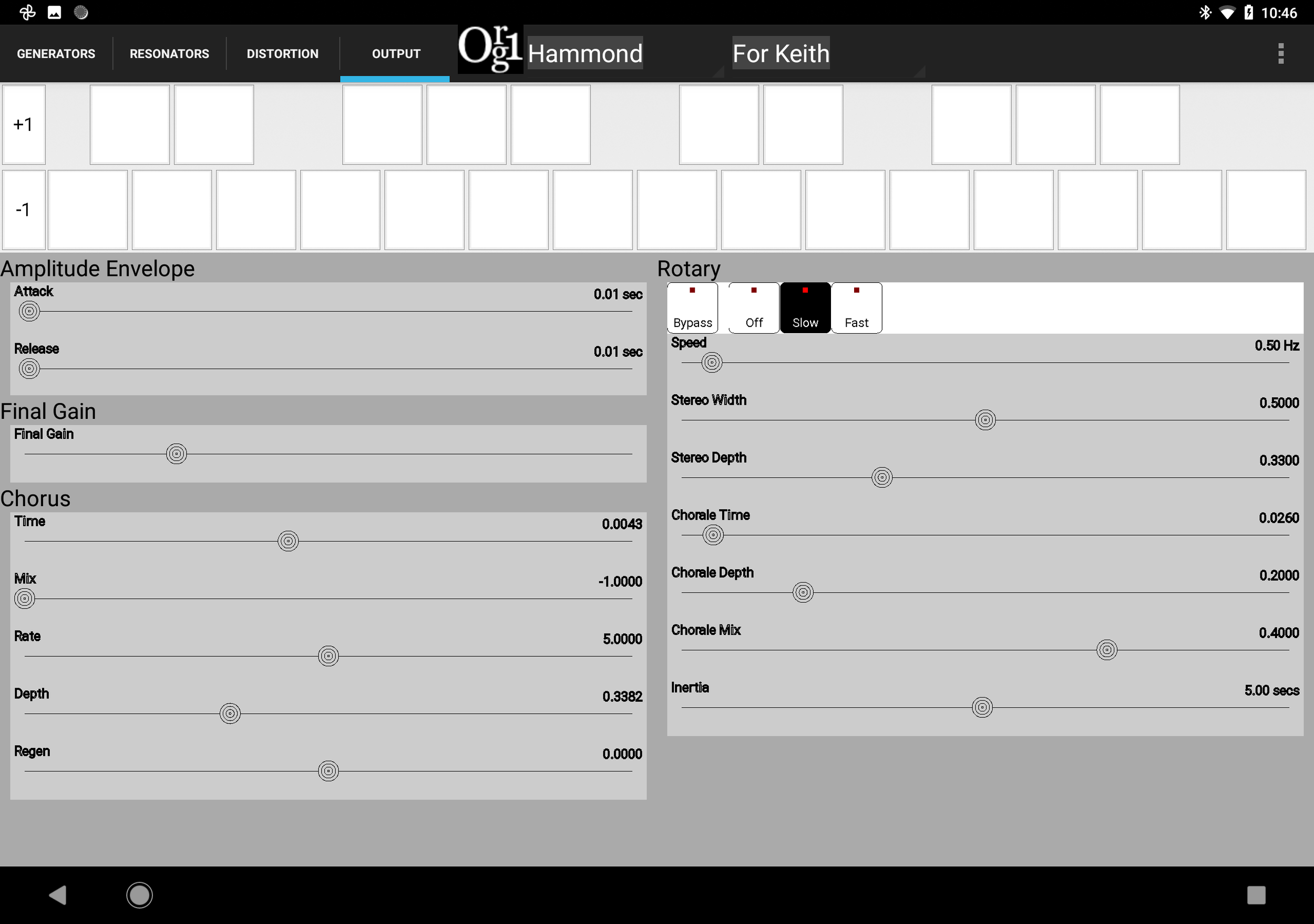Org1 Overview
Org1 is a organ-style virtual instrument. By “organ-style”, we mean virtual drawbars for controlling harmonic content of the basic tone (from several basic waveforms). But not limited to just that! It is very good at emulating several types of electronic and electro-mechanical organs, but it can go well beyond that paradigm.
Org1 features:
2 “drawbar” generators. Each implements:
5 basic tones: Dolce, Principale, Strings, Flute & Reede
9 “Drawbars”: 16’, 5 1/3’, 8’, 4’, 2 2/3’, 2’, 1 3/5’, 1 1/3’ & 1’
Tune (whole generator), Detune (random detune of each drawbar within a generator) Stretch (proportional detune of each footage drawbar within a generator)
Generator Balance
Vibrato
Control of speed, depth and differential speed between generators.
Percussion
Legato triggering (as on Hammond organs)
2nd, 3rd & 5th harmonics
Decay rate
Key Click
Spit & Chiff
Pitch, Tone, Emphasis & Mode
3 Resonators
Frequency, resonance & gain (including negative gain) controls
Bypass, Low Pass, Band Pass, High Pass and No Pass modes
Distortion
4 modes: None, Soft 1, Soft 2 & Hard
Amount, Drive, Asymmetry & Gain
Attack / Release amplitude envelope
Final Volume
Chorus
Control of Time, Mix, Rate, Depth & Regen
Rotary
Control of Speed & Inertia,
Per-speed
Stereo Width, Stereo Depth, Chorale Time, Chorale Depth & Chorale Mix
Org1 Architecture
Org1 Minimal User’s Guide
Synth Sections
The major sections of the instrument are accessed by tabs just above the on-screen keyboard. These tab contain the synthesis parameter controls. In the case that there is insufficient screen space to display all of the controls, the control space can be scrolled by touching a non-control portion of the screen and dragging the display up or down.
Synthesis Controls
Synthesis parameters in Org1 are manipulated by switches and sliders in the control space of each tab. Switches are activated (or selected) by tapping on them. Sliders are manipulated by tapping on the desired value or dragging the “handle”. Double-tapping on a slider will return it to it’s “nominal” value (often zero).
Org1 - Application Sections
The signal flow and UI of Org1 is divided into 4 sections, represented by tabs at the top of the display (below the optional on-screen keyboard).
The Generators panel contain controls for Org1’s 2 generators, percussion and key click.
Generator A / B
Rank “Drawbars’ -
Tune
Detune
Stretch
Mix -
Vibrato
Speed
Depth
Spread
Percussion
Rank
Decay
Key Click
Chiff
Spit
Pitch
Tone
Emph
Mode
The Resonators panel contains controls for the 3 resonators
Resonators Presets - All parameters of the 3 resonators can be saved and recalled. Org1 comes with a number of useful vocal and instrumental resonances presets.
Resonator 1 / 2 / 3
Mode - Bypass, Low Pass, Band Pass, High Pass, No Pass.
Frequency - The cutoff or center frequency.
Resonance - The amount of “emphasis” feedback. This can make the effect of the resonator more or less pronounced.
Gain - The amount of positive or negative gain applied to the passed signal.
The Distortion panel contains controls for Org1’s distortion effect
Type - None, Soft 1, Soft 2, Hard
Drive
Asymmetry
Gain
Transfer Curve
The Output panel contains controls for amplitude and effects.
Amplitude Envelope
Attack / Release - Attack and Release (AR) paramenters.
Final Gain - Controls the amplitude of the final output. This is useful to balance the perceived volume between different patches.
Chorus
Time - The base delay.
Mix - The mix delayed to non-delayed signal.
Rate - The rate of modulation.
Depth - The depth of modulation.
Regen - The amount of negative feedback applied to the chorus effect. This can create greater “emphasis” of the effect.
Rotary
Mode
Chorale / Tremolo Speed
Chorale / Tremolo Stereo Width
Chorale / Tremolo Stereo Depth
Chorale / Tremolo Time
Chorale / Tremolo Depth
Choral / Tremolo Mix
Inertia
Org1 - Privacy Statement
Org1 DOES NOT collect or transmit ANY data of any kind.
Specifically, Ens1:
DOES NOT collect any information
DOES NOT transmit or upload any information
DOES NOT use any sensitive permissions, i.e.
DOES NOT access the microphone
DOES NOT access the camera
DOES NOT access any telephony features.
DOES ask to access your local files so that it can save and load presets.








